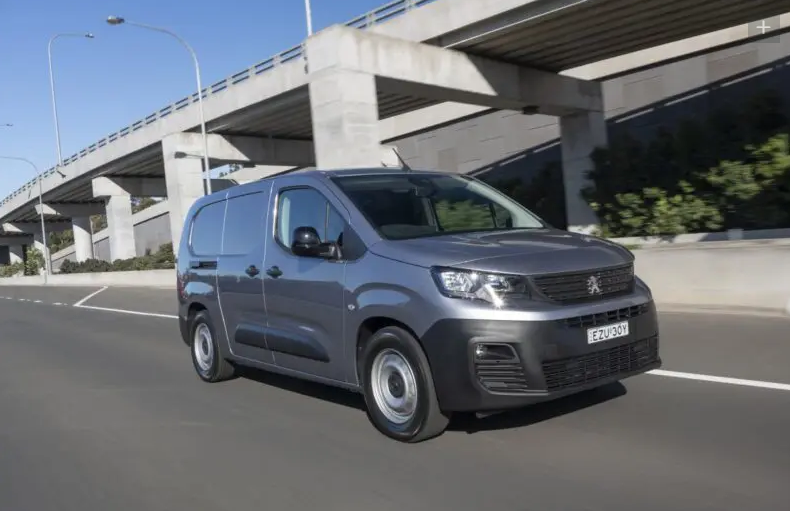
Now the first few e-Partner delivery vans are in the country and we at The Driven got to take it for a spin around the streets of Sydney.
This delivery van has two fairly comfortable seats at the front with the driver’s side also getting a fold-down armrest. Getting into the e-Partner was quite easy given the relatively low ground clearance.
Once on the inside, you are presented with a simple steering wheel setup and an instrument cluster and the infotainment screens that are simple and very functional. Android Auto and Apple Carplay is also available for drivers, helping drivers integrate Google or Apple Maps on delivery runs.
The steering buttons and scroll wheels were very tactile and the finish felt quite premium for a work van. It was also reflected in the rest of the interior with functional buttons with easy-to-reach controls.
This is quite a good thing given the van is designed to be the driver’s workplace for most of the day so you don’t want to be overwhelmed with too many controls or buttons that are too far to reach during a long work shift.
To start the van, it’s as simple as starting a traditional van, but without the noise of an ICE engine.
There are three driving modes with different power outputs. For the drive, an appropriate place to start for me was the Eco mode which tells the motor to output 60 kW of power and 190 Nm of peak torque.
I started the drive with 270 km of range, which is plenty for many inner-city delivery vans. After manoeuvring around parked cars and ending up on city streets, it was easy to see the benefits of the Eco mode.
The e-Partner drove easily around corners and had plenty of go when stepping on the accelerator. It’s also worth noting that the e-Partner I was testing had 200 kg of load in the rear cargo area.
Even with the load, it accelerated from a standstill at traffic lights without any hiccups. With a full payload of 753 kg in the 3.9 cubic meters cargo area, this 4.75-meter long van is expected to perform for many last-mile delivery operators.
Driving through Sydney at low speeds, many of the safety e-Partner’s features were on show. An example of this is the pedestrian warning system which is present to warn road users of the van. It operates at speeds of up to 30 km/h.
Another key feature are the auto headlights with many city streets getting quite dark in the shadows of surrounding buildings. It’s one less thing for drivers to worry about on dawn or dusk delivery runs.
At higher speeds, other key safety features also help keep drivers and other road users safe. These include:
Lane Keep Assist
Lane Departure Warning
Forward Collision Warning
Autonomous Emergency Braking
Emergency Braking Assist
Speed Sign Recognition
On the highway, the e-Partner in Eco mode did fairly well, even at speeds of up to 100 km/h. With a heavier load, Power mode may be helpful on some runs. This mode can provide up to 100 kW of motor output and up to 260 Nm of peak torque.
With its 50 kWh battery pack, there is a reasonable amount of energy available for various delivery runs.
Staying on the battery, there is 7.4 kW of AC charging available along with DC charging. On busier delivery days, DC charging at a 100 kW+ charger during lunch breaks can get the car topped up from 0-80% in 30 minutes.
Loading and unloading the van is also quite easy with the e-Partner’s multiple loading doors. There are twin rear doors that can be opened for ease of loading while at the depot or unloading goods at a customer site.